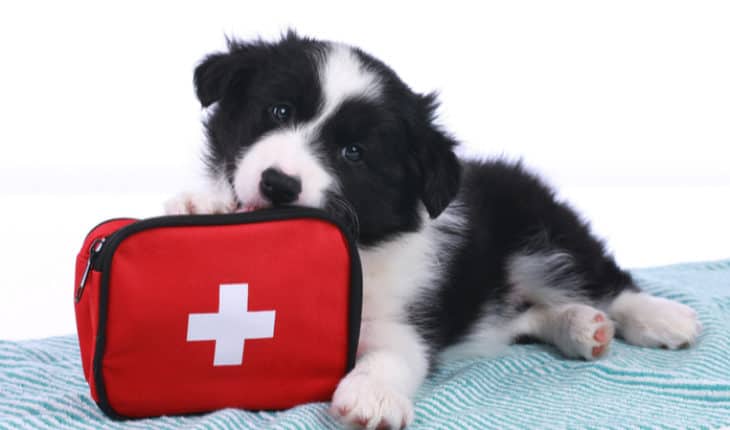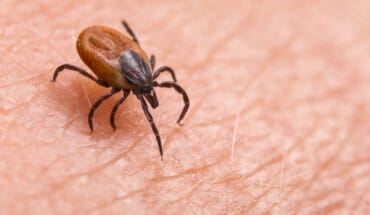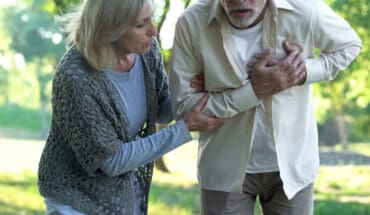5 emergency tips & techniques to save your dog’s life: Emma Hammett of First Aid for Pets and First Aid for life gives essential advice for dog owners:
1) Understand what is normal for your pet so you can quickly spot if something is wrong
Help your dog to become accustomed to being examined, so that it becomes a normal part of petting and being with them. Gradually get them used to having their ears, skin, paws, gums and eyes examined, so that you are able to examine them without alarming them if you are concerned.
It is always useful to keep a close eye on your dog so that you can spot any subtle changes early on. Any changes in your pet’s behaviour – however small – can be an indicator that something is wrong. These changes can include those in appetite, bowel movements and even smell can indicate that there is something seriously wrong with your pet. Know the key indicators to look out for so that you can act quickly. Early identification and intervention, if you spot potential problems can prevent minor ailments developing into more serious issues.
2) Learn How to Check A Pulse
A pulse can be a good and quick indicator of a pet’s health and an indication that something might be wrong. Note down their normal values, so you can spot when something isn’t right.
To take their pulse: the easiest place to find the dog’s pulse is in the upper third of their thigh. Place your hand over the top of their thigh and gently squeeze your fingers just underneath their leg. You should be able to feel the artery pulsing at this point.
Time the pulse for 15 seconds and then multiply the result by 4 in order to calculate the number beats per minute.
Good to know: your thumb has a strong pulse itself so don’t use this to take their pulse, otherwise you will be timing your own pulse rate.
Watch our video here to see a demonstration
It is also helpful to know your pet’s normal respiratory rate and temperature. More information on taking these measurements (and normal values) can be found on our site.

Click here for an online CPR for Dogs course
3) Know how to give CPR:
Have you ever wondered what to do if your dog suddenly collapsed in the middle of the park – would you know how to give your pet the best chance of survival? Many people in this situation would panic, or possibly try to adapt what they know about giving human CPR.
However, dogs aren’t quite like us – although the process is very similar:
If your dog has stopped breathing, performing CPR will increase your dog’s chances of survival. Call the Vet as soon as possible
Click here to read how to give your pet CPR

Interested in a free e-book full of tips and techniques to save your dog’s life? Click here
4) Know how to help if your dog is choking:
Choking is one of the most common medical emergencies in pets, and sadly responsible for a lot of fatalities.
If your dog starts to choke, it can be a very frightening experience for both pet and owner. Knowing how to respond promptly and effectively when you are in a stressful situation can help a more positive outcome. Choking occurs when something blocks the airway.
When the airway is partially blocked the animal may start retching, pacing back and forth and pawing at their mouth. If their airway becomes totally blocked, they will be unable to make any sound at all.
Dogs can choke on anything, from plastic bags, balls, socks, toys or anything they can get hold of, if it goes down the wrong way it may leave them unable to breathe. It is important that you spot these signs and then know how to act fast to dislodge the obstruction. Read this article for an in depth guide on how to help your choking pet

5) Learn how to bandage your dog in case of bleeding:
If your pet is bleeding, it is a priority to stop the blood coming out. Therefore, knowing how to correctly control bleeding and to bandage the wound are invaluable skills. It is not a priority to clean the wound. Ideally, all wounds should be seen by a vet. If your dog was bitten by another dog, it is imperative to get it seen by a professional as bites often have jagged edges and are extremely prone to infection.
Never bandage a suspected break – bandages should only be used for bleeds.
Do not apply the bandage too tightly. If you are bandaging the lower limb, you should cover the foot. But you must ensure that you check the paw regularly to ensure that it is not swelling. If you have any concerns, call the Vet.
If you are applying a bandage at home, it should be checked by a Vet as soon as possible. Never leave a bandage on for longer than 24 hours unless applied by a Vet.
Avoid the bandage getting wet as this will make it tighter and can lead to the wound becoming infected. Avoid taking your dog out in wet conditions. Your Vet will often be able to provide used IV fluid bags to try and protect the bandage from getting wet.
Watch our video explaining how to bandage a wound
Why not come and join one of our pet first aid courses?
First Aid for Pets runs both online and practical courses that cover all the key aspects of dog first aid, from how to care for an unconscious dog to commonly occurring injuries and illnesses such as choking, bleeding, fitting, poisoning and much more. The practical courses are run in small groups, with hands-on experience using a specially designed dog manikin and numerous other practical training aids.
Watch Emma explain what you would learn on a dog first aid course
Many ‘pet parents’ benefit immensely from the courses, but they aren’t just for dog owners. First aid courses are an invaluable differentiator for those working in the in industry as dog-walkers or groomers, as they can be a great way to demonstrate your knowledge and skills in dog first aid to enhance your authority and encourage new and potential clients to feel confident trusting their pets to your care.
We have produced a helpful guide to the essential areas all pet owners should know – click here to download a free copy
- What is a seizure? - 13th March 2025
- Febrile Convulsions and Seizures in Children - 13th March 2025
- Why women are less likely to receive CPR or survive cardiac arrest - 6th March 2025






